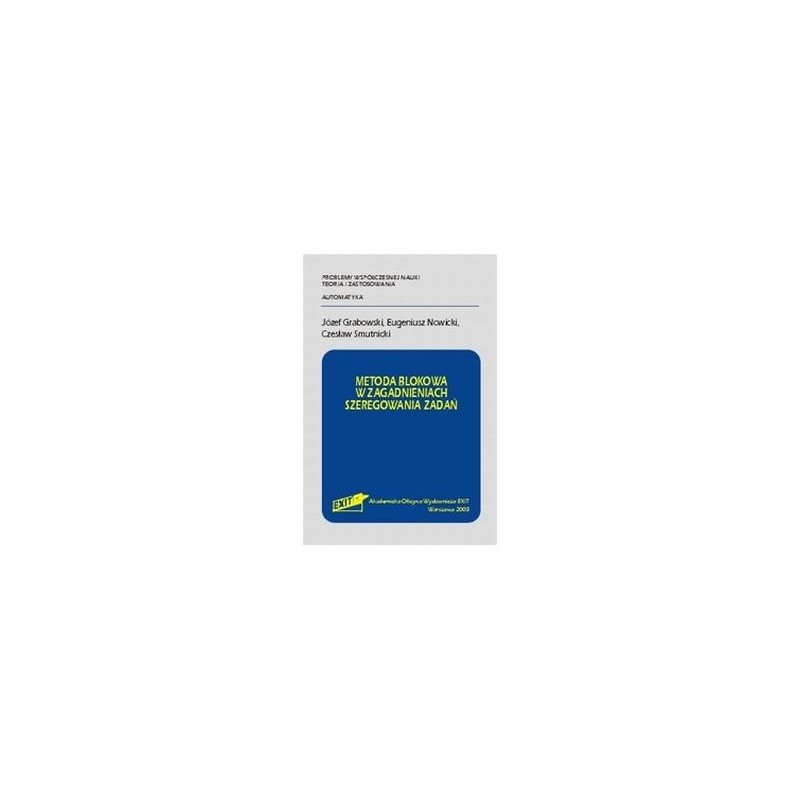- Out-of-Stock




free shipping in Poland for all orders over 500 PLN

If your payment will be credited to our account by 11:00

Each consumer can return the purchased goods within 14 days
About the book
The book deals with the problem of scheduling tasks. This problem occurs both in production systems and in computer systems and networks. The book presents mathematical models of problems, their properties and algorithms, based primarily on the so-called block method. This method is the original approach in the theory of task scheduling, which, using a simple conceptually and structurally graphical model, properties of the critical path in the graph and some other stuctural properties of problems, allows you to design accurate and approximate algorithms with surprisingly good numerical properties. The presented book is the first in Polish such a comprehensive and comprehensive presentation of the block method that is the output of the authors. After introducing the reader to the problem of scheduling tasks (notation, criteria, computational complexity), three most basic types of scheduling problems are discussed in detail: single-machine problems, flow problems and nesting problems. A number of practical generalizations are also presented, such as: transport, conversion, buffering, limited system capacity, palletizing. A large number of illustrative examples makes reading a book relatively easy, despite its rather theoretical nature.
The book is addressed to students of the senior years of Automation and Robotics as well as Information Technology, PhD students, as well as to research workers. It can also be helpful for planner and designer managers in the field of short-term management and production planning.
No product available!
No product available!
SEN-12636 - 9 Degrees of Freedom IMU Breakout - LSM9DS0
No product available!
No product available!
Development board with SAMD21 microcontroller (ARM Cortex® M0+), 8 I/O lines, 12 PWM channels, micro-USB. The board is equipped with the CMWX1ZZABZ module enabling the implementation of communication in Lo-Ra networks. Arduino MKR WAN1300 ABX00017
No product available!
No product available!
No product available!
No product available!
No product available!
No product available!
Permanent cylindrical neodymium magnet with a diameter of 2 mm and a height of 2 mm.
No product available!
No product available!
No product available!
3DDescriptionprinter with the function of auto-leveling the bed, resuming printing and filament sensor. A kit for self-assembly. Anet ET4
No product available!
HK FrSky TEMS-01 Telemetry Temperature Sensor (19976)
No product available!
Module with a water level sensor with a measuring range of up to 10 cm. The board is equipped with a Grove connector and communicates via the I2C interface. Seeed Studio 101020635
No product available!

